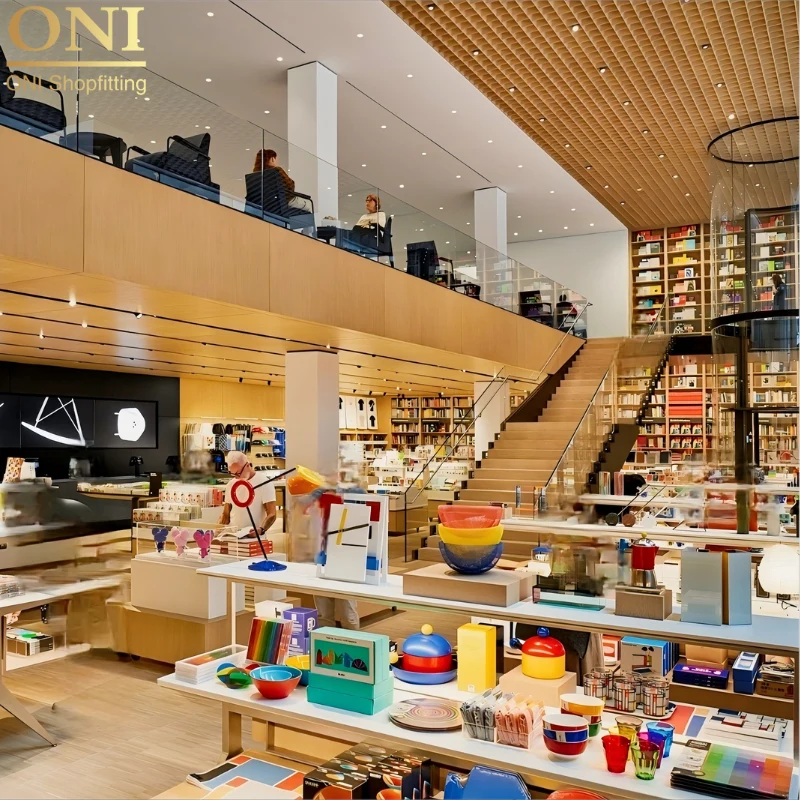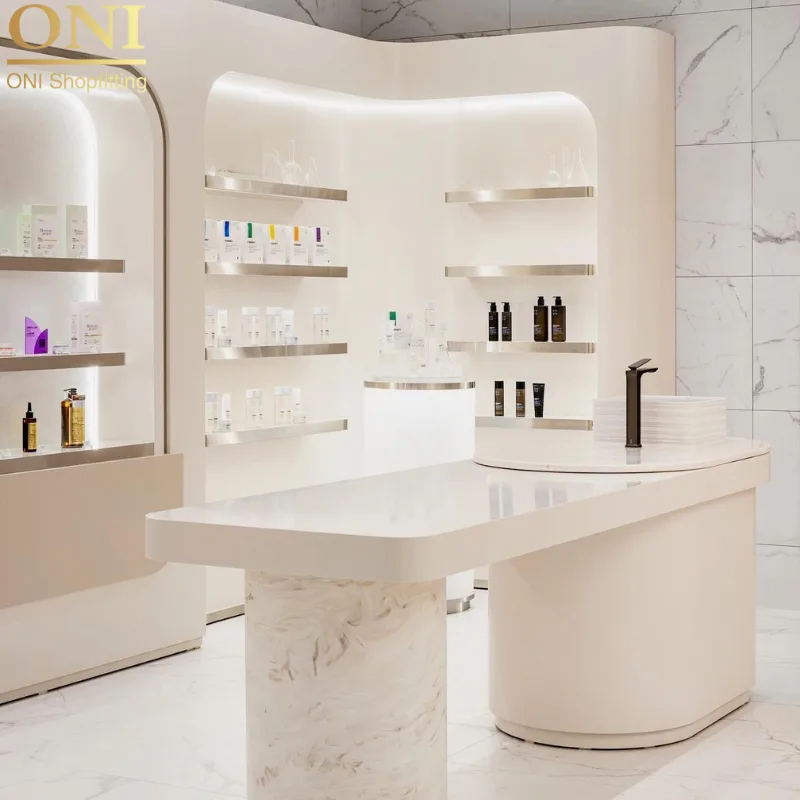The Production Process of Store Fixtures: From Concept to Completion
The production process of storefront fixtures encompasses multiple stages from design to finished products, with each step requiring strict control to ensure the final products meet usage requirements and quality standards. This is especially critical for projects involving retail display cases, cosmetic display stand units, and high-end perfume display cabinets.
The specific process is as follows:
📐1. Design and Requirement Analysis
Firstly, the display case manufacturer conducts in-depth communication with the customer to clarify the application scenarios (such as apparel store design, supermarkets, cosmetics stores, etc.), functional requirements (display, storage, decoration), size specifications, style positioning, and budget.
Subsequently, the design team, based on the customer’s needs, uses software such as CAD and 3D modeling for drawing design, including structural sketches, three-dimensional renderings, and detailed dimension annotations.
After the design is completed, it needs to be confirmed by the customer to ensure it meets expectations and avoid subsequent rework.
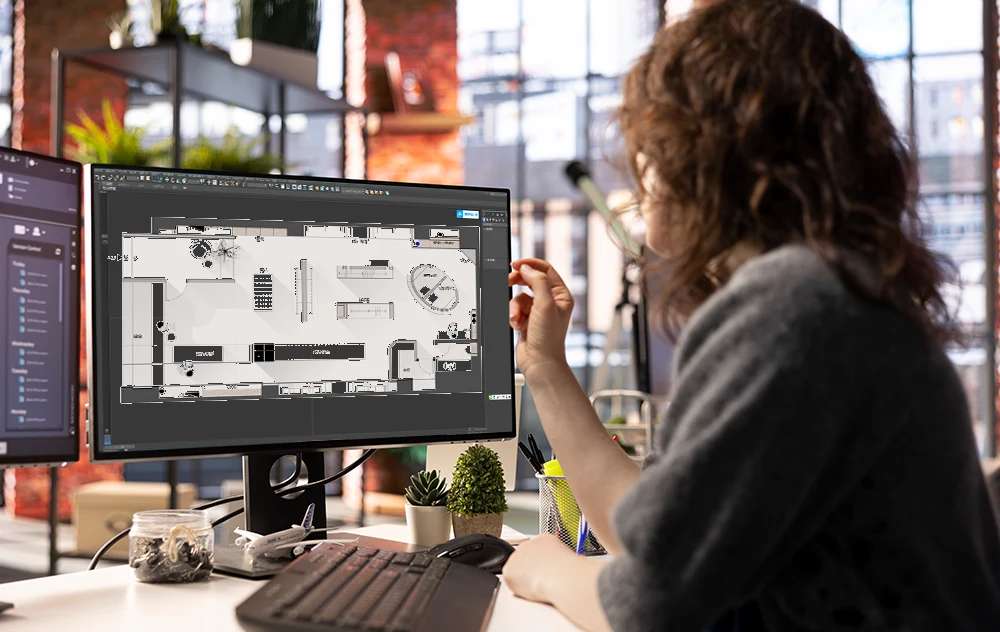
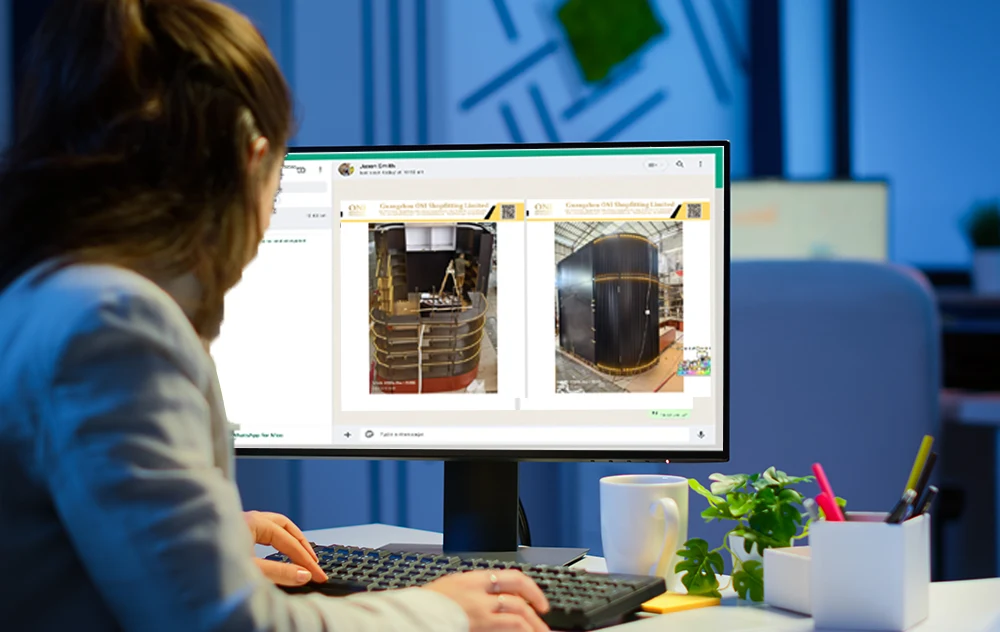
⚙️2. Material Selection and Procurement
Materials are selected based on design functions. Common materials for storefront fixtures include wood (solid wood, chipboard board, MDF), metals (steel, aluminum), glass, acrylic glass display case components, and decorative finishes like leather or fabric.
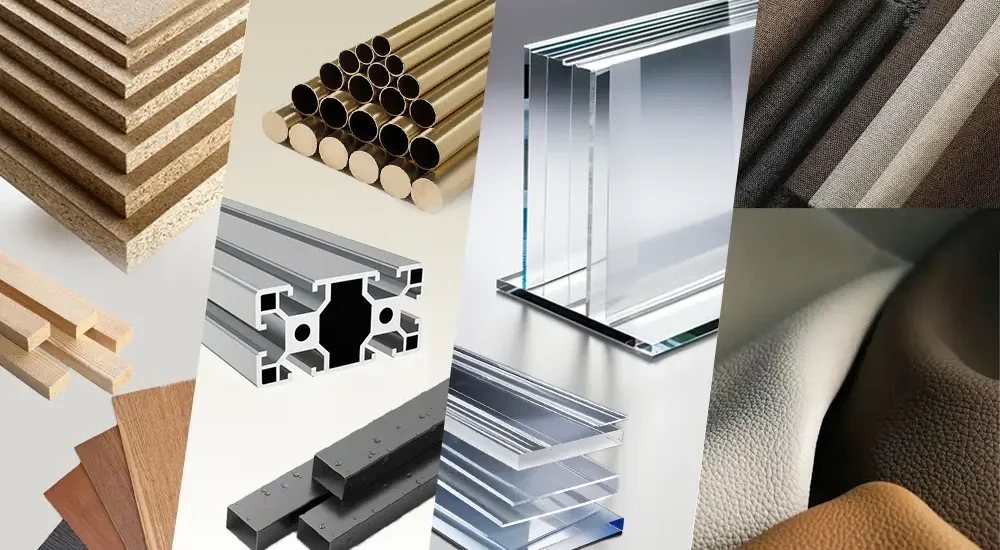
The purchasing department will procure raw materials from qualified suppliers according to the material list and conduct quality inspections before warehousing, checking whether the material, specifications, and environmental performance meet the requirements to ensure stable material quality.
🪚3.Cutting and Forming Processing
Corresponding cutting and forming processes are carried out for different materials:
- Wood Processing: Equipment such as panel saws and CNC engraving machines are used to cut and engrave wood according to the drawing dimensions to form basic shapes; for curved shapes, steam bending or mold pressing may also be performed.
- Metal Processing: Metal sheets or profiles are processed into the required structures through laser cutting, stamping, bending and other processes; for wrought iron fixtures, forging may be required to create unique shapes.
- Acrylic/Glass Processing: Laser cutting or mechanical cutting is used for blanking, followed by grinding and polishing; for special-shaped requirements, the hot bending process will be used.
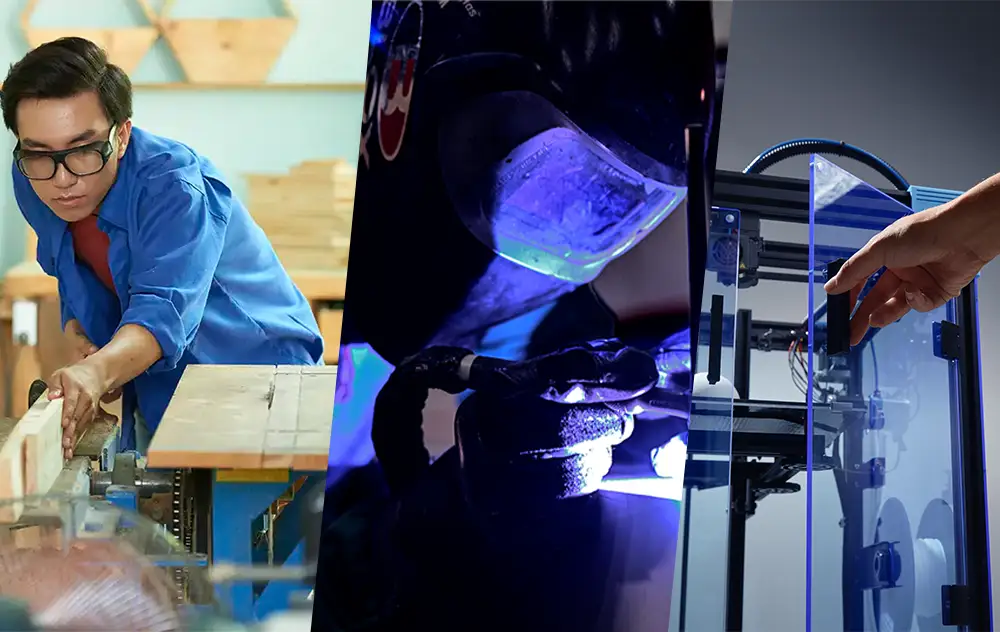
🛡️4. Surface Treatment
Surface treatment not only improves the appearance of store fixtures but also enhances their durability:
- Wood Surface Treatment: First, sanding is done to remove burrs, then primer and topcoat are applied according to design requirements, or treatments such as veneering (wood veneer, PVC film, etc.), pasting, and antiquing are carried out to present different textures and colors.
- Metal Surface Treatment: Common methods include painting (electrostatic spraying to ensure uniform coating), electroplating (chromium plating, zinc plating, etc. to enhance rust resistance), sandblasting (to form a rough texture), and polishing (to improve gloss).
- Acrylic/Glass Surface Treatment: Sanding, silk-screen printing (printing patterns or logos), coating, etc. can be performed to increase decorativeness and functionality.
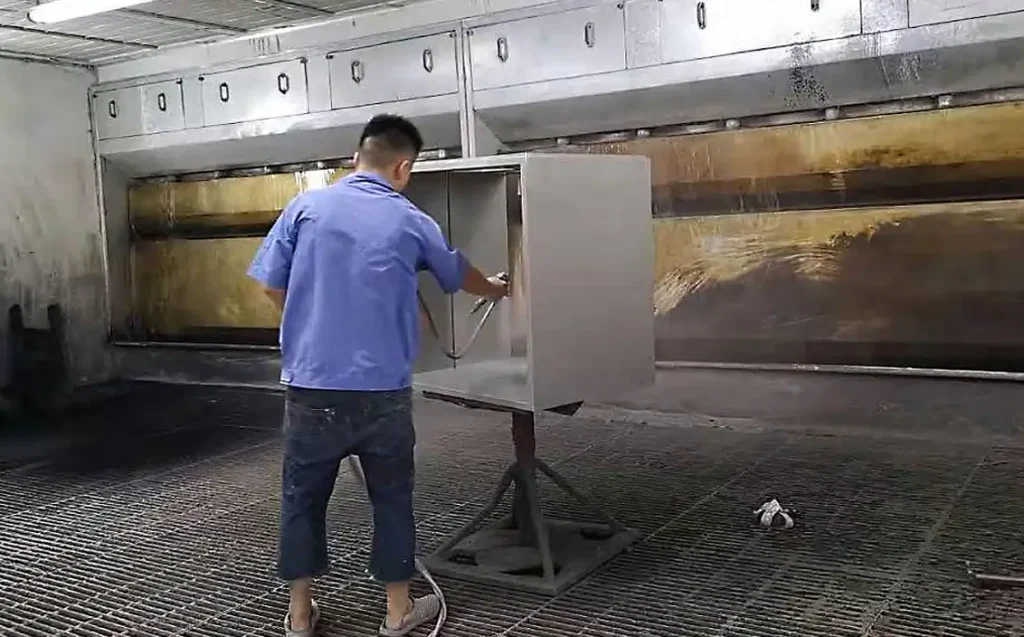
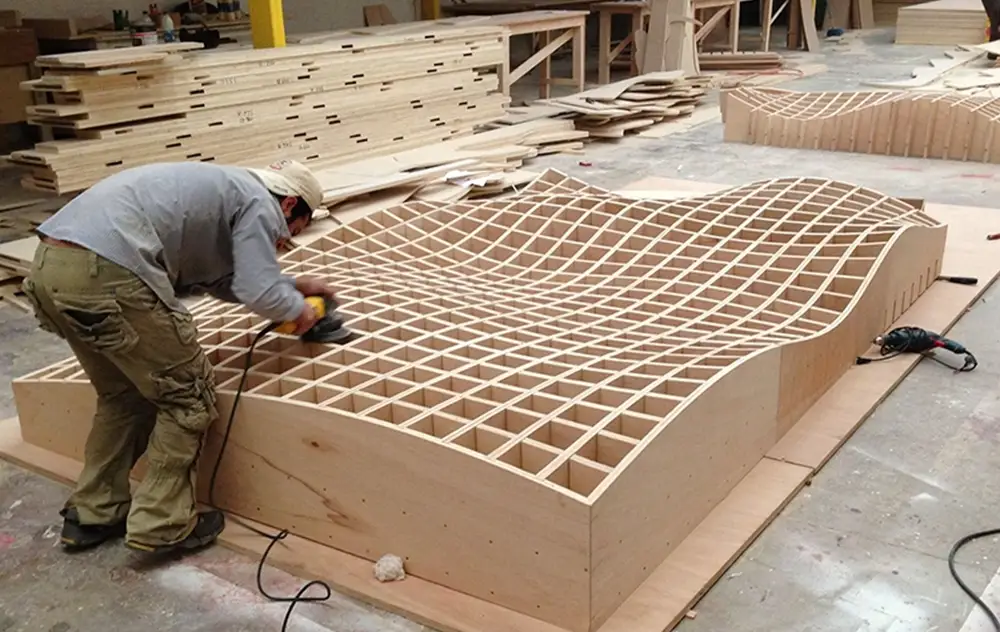
🔩5. Installation of Functional Accessories
According to the functional requirements of the store fixtures, corresponding accessories are installed, such as hooks, laminates, lighting (LED light strips, spotlights, etc.), slide rails, locks, label slots, etc.
During installation, it is necessary to ensure that the accessories are positioned accurately and function smoothly. For example, the installation of lighting should ensure uniform lighting effect, and the load-bearing capacity of hooks should meet the design standards.
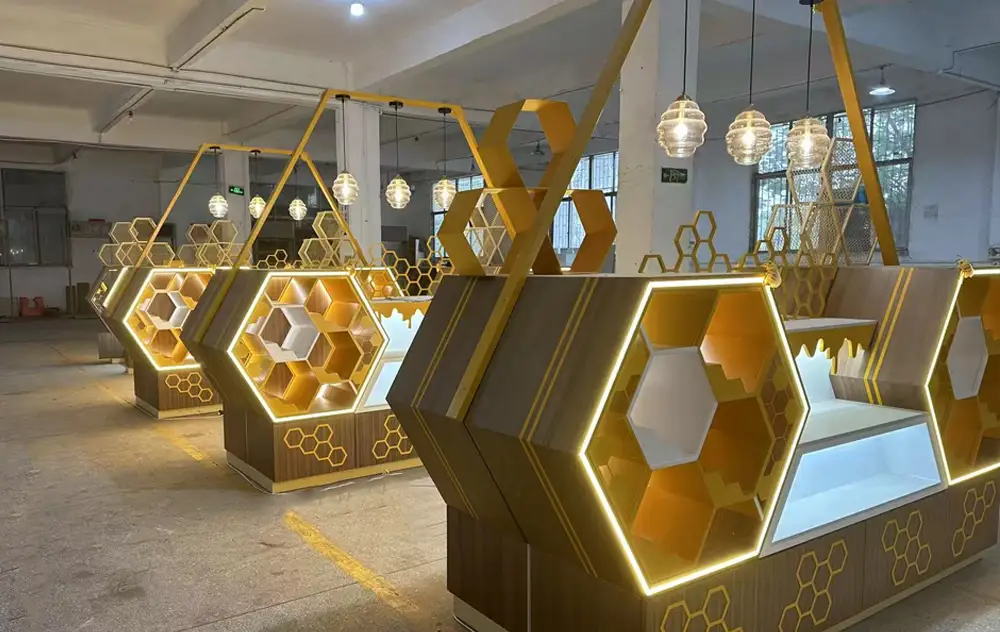
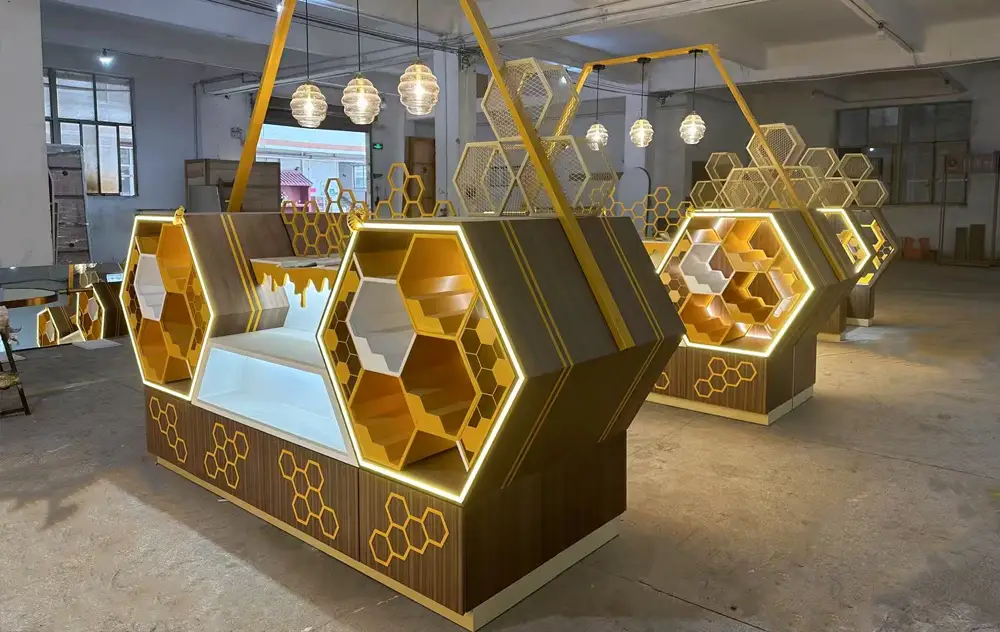
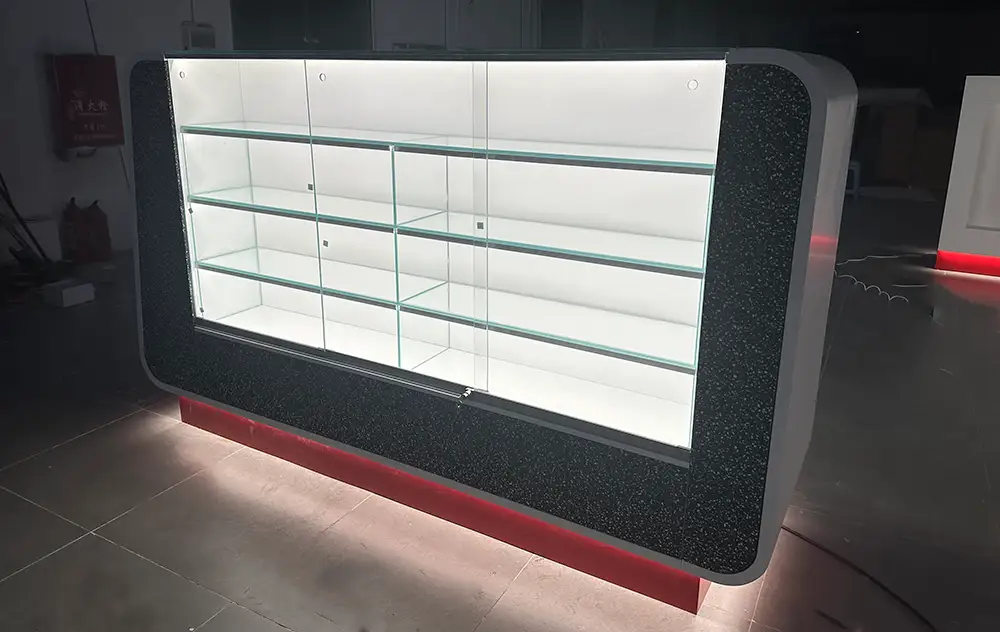
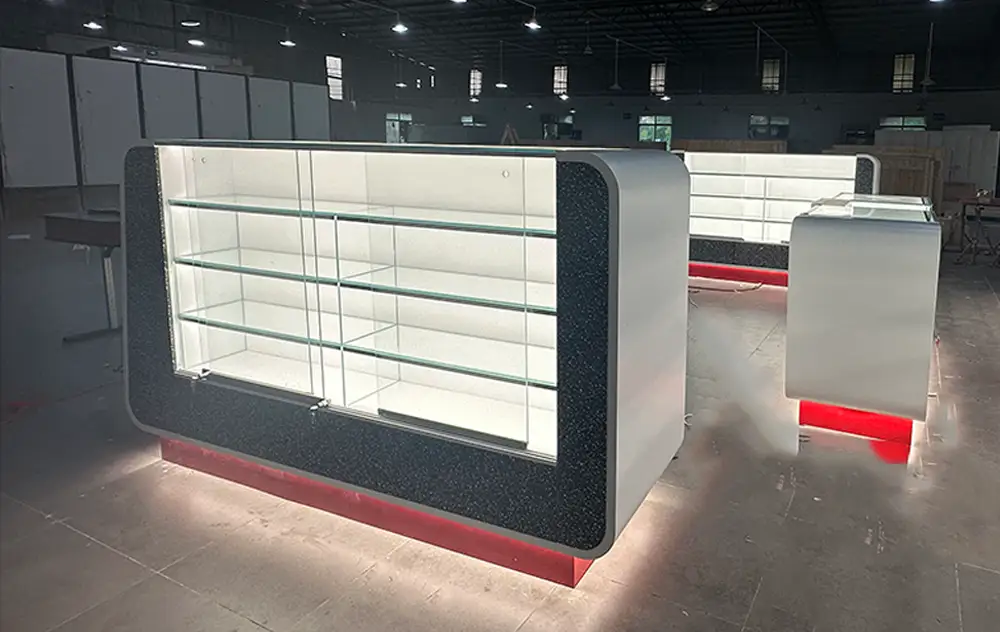
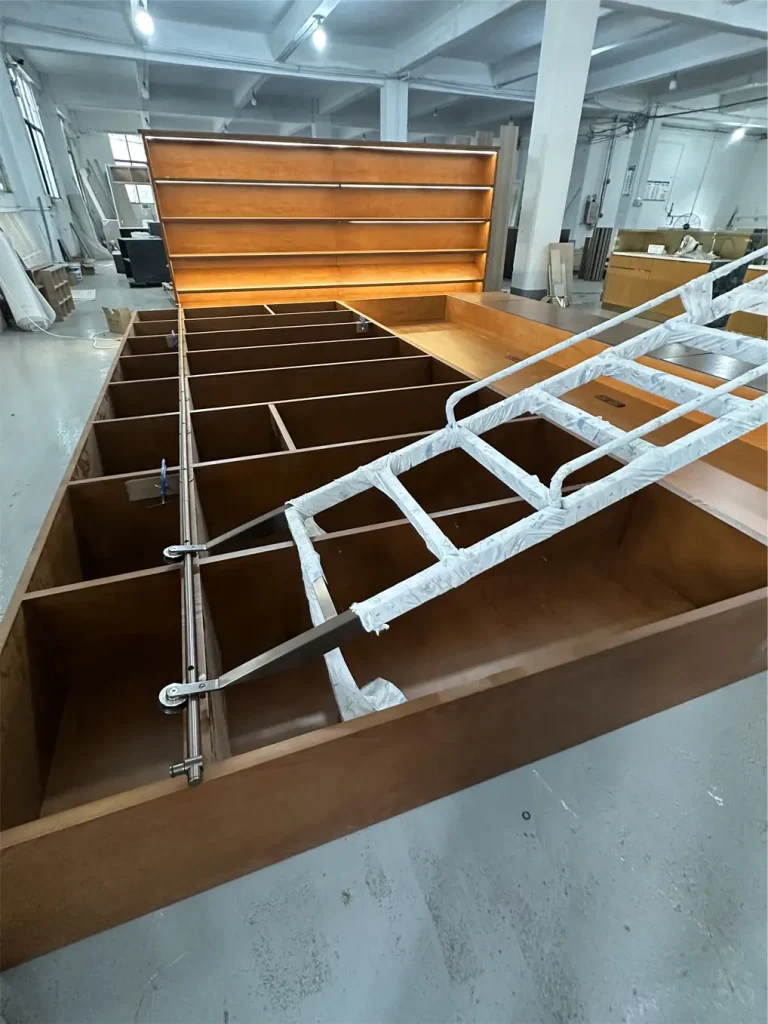
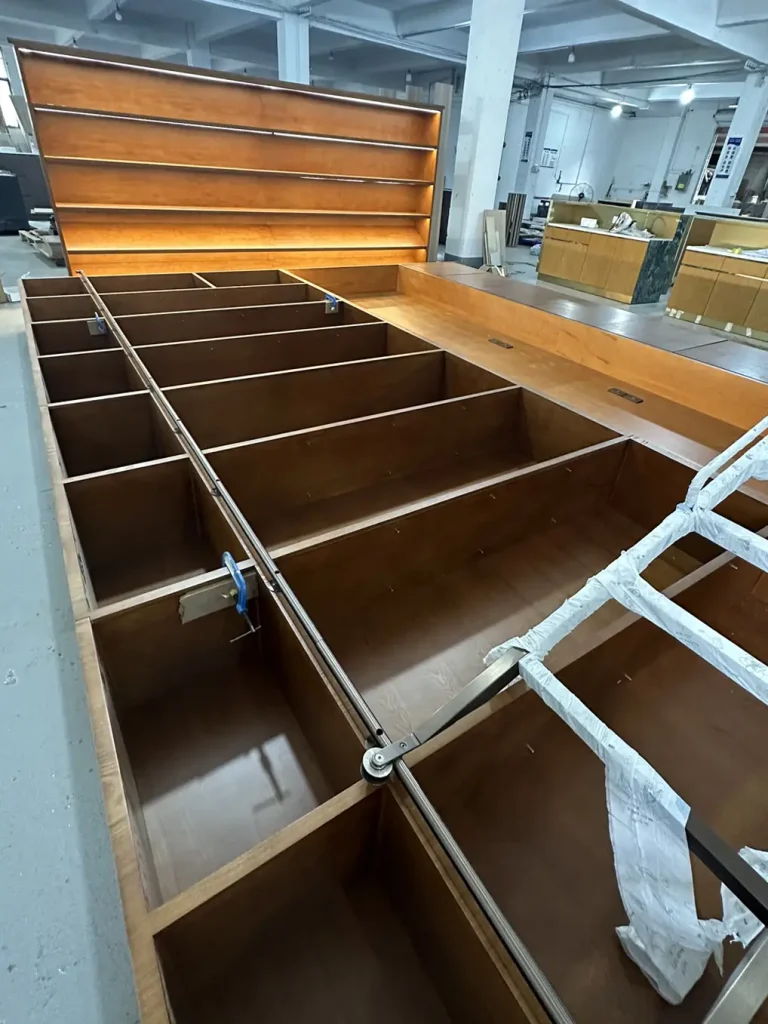
🔧6. Assembly and Joining
Each processed component is assembled according to the assembly drawings:
For wooden fixtures, they are usually joined by mortise and tenon structures, screw fixing, glue bonding, etc.; metal fixtures are mostly assembled by welding, bolt connection, buckle fixing, etc.; acrylic and glass components may be bonded with special glue or fixed with hardware.
During assembly, it is necessary to ensure that all components are firmly connected, positioned accurately, and the overall structure is stable. At the same time, check whether the joints are flat and seamless to ensure a beautiful appearance.
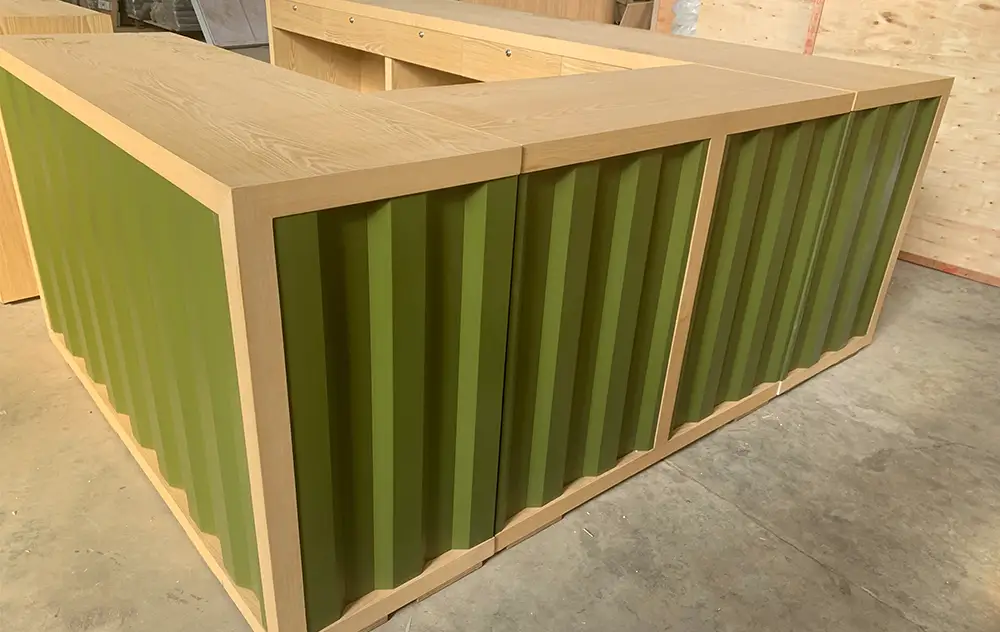

🔍7. Quality Inspection
Thorough testing ensures that the final storefront fixtures meet performance standards:
- Check whether the appearance has scratches, deformation, color difference, coating peeling, etc.;
- Test the structural stability, such as shake test and load-bearing test (to ensure it can bear the specified weight without deformation);
- Verify the use effect of functional accessories, such as whether the drawer slides smoothly and whether the lighting works normally.
- If unqualified products are found, they need to be repaired or scrapped in a timely manner until they meet the quality standards.
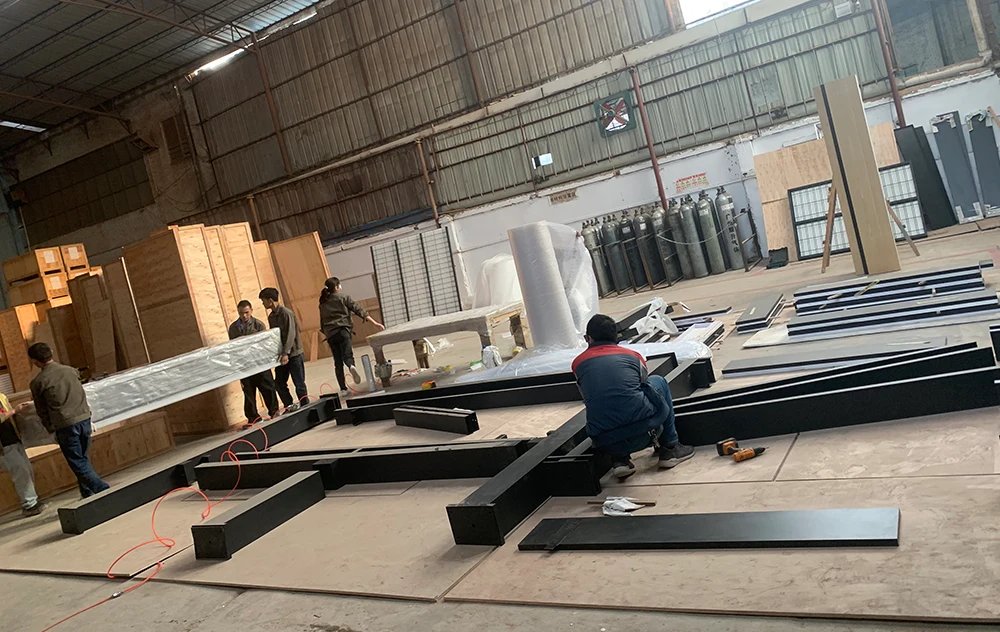
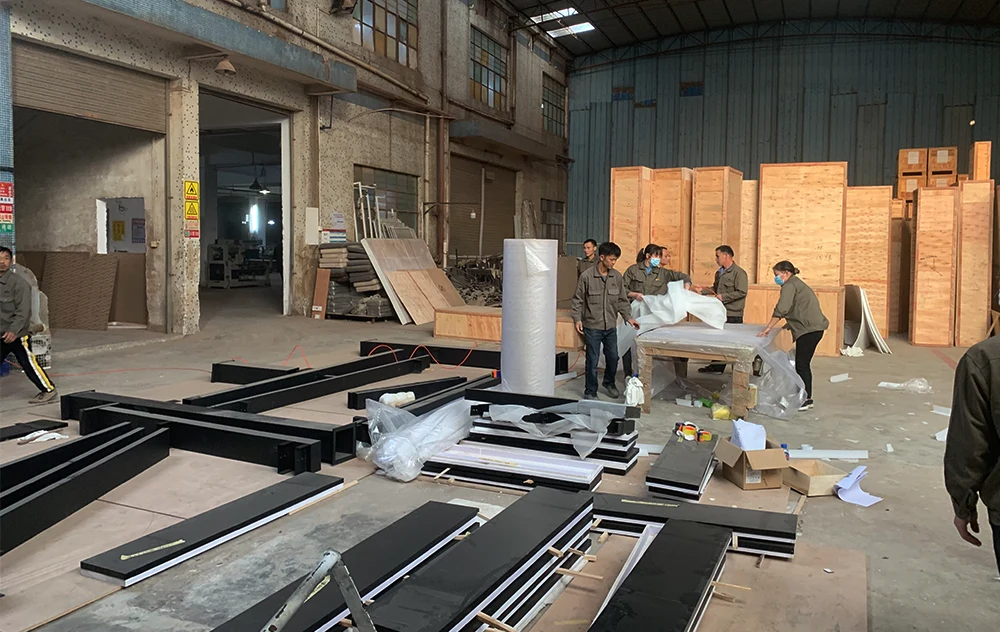
📦8. Packaging and Delivery

Qualified store fixtures will be packaged with plywood + bubble wrapped+corner protection+necessary carton box.
Finished retail display cases and other storefront fixtures are packed using plywood, bubble wrap, corner protectors, and cartons. Fragile items like glass or acrylic are reinforced.
After packaging, mark the product name, specifications, quantity, customer information, etc., and arrange for warehousing or direct delivery.
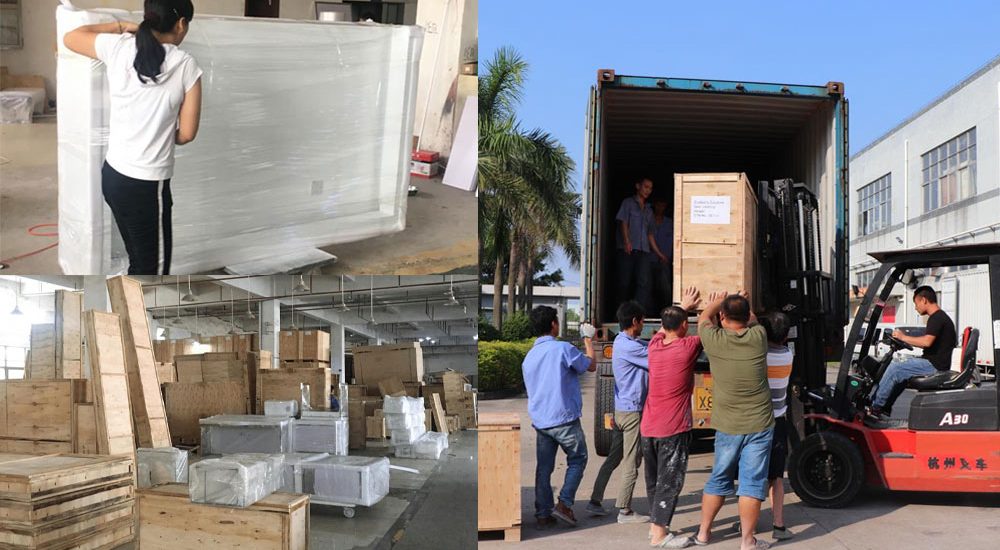
Why Choose ONI Shopfitting?
As one of China’s trusted retail display fixture suppliers, we combine craftsmanship, competitive pricing, and communication excellence. Whether you’re looking for a local partner or searching for “retail display racks near me” with global capabilities – ONI Display delivers.
👉 Get in touch with us today to start your project.
📞 WhatsApp/Call: +86 186 2096 3396
📧 Email: sales1@onishopfitting.com
🌐 Website: www.onidisplay.com
📍 Factory Location: Guangzhou, China
🔗Check out our social media case studies:Guangzhou ONI Shopfitting Limited





